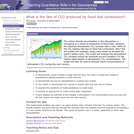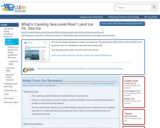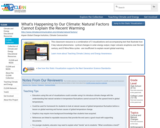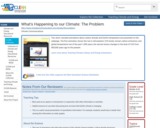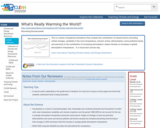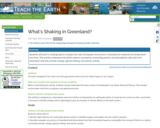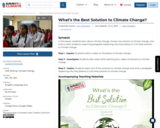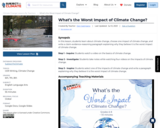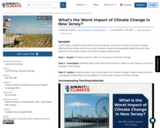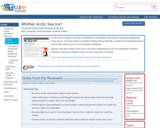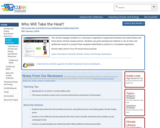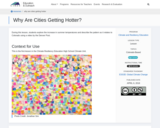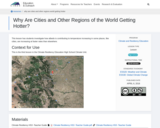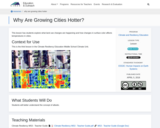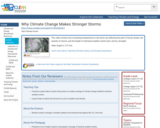SYNOPSIS: In this lesson, students learn about climate change, choose one impact of climate change affecting New Jersey, and write a claim-evidence-reasoning paragraph explaining why they believe it is the worst impact of climate change in New Jersey.
SCIENTIST NOTES: This lesson illustrates the impacts of climate change in New Jersey. Five video resources are presented that provide background information, answer skepticism, and explore four key implications of climate change in New Jersey. The four climate impact videos are well-sourced and address local concerns with scientists from Rutgers and the New Jersey Department of Environmental Protection. Students are tasked with deciding which is the worst impact of climate change and then writing a paragraph to support their claim. This lesson is recommended for teaching.
POSITIVES:
-This lesson is terrific for teaching paragraph structure.
-The color coding of the sentences in the paragraph is really helpful, especially for concrete thinkers.
ADDITIONAL PREREQUISITES:
-This lesson shows some of the impacts of climate change. Some of these might be difficult to hear. Students may feel anger, sadness, anxiety, or grief after hearing about some of these devastating impacts. Encourage them to share their emotions.
-There is, of course, no right answer to “What’s the worst impact of climate change?” These impacts of climate change are all catastrophic in their own right.
-Encourage the students to use as many hard facts as possible in their supporting sentences. These include dates, names, places, and specific events.
-You can use 2-3 videos of impacts of climate change if you do not want to use all of them.
-Make sure students know that there are many other impacts of climate change aside from the four impacts in the four videos. Other impacts of climate change include extreme weather events, mass extinction, climate migration, etc. The goal of this lesson is to choose one of those four impacts of climate change.
DIFFERENTIATION:
-Most students will benefit from color coding their sentences. Encourage them to keep their text highlighted as they write. They can even keep their paragraphs highlighted after they finish.
-Weaker students may write only five sentences. Stronger students may expand more in their supporting sentences.
-If students are struggling with their closing sentences, ask them to read their claim sentences aloud. Sometimes this helps guide their thinking.
-Stronger students who finish early can read their paragraphs to one another, discuss the writing process, and discuss possible solutions to climate change.
